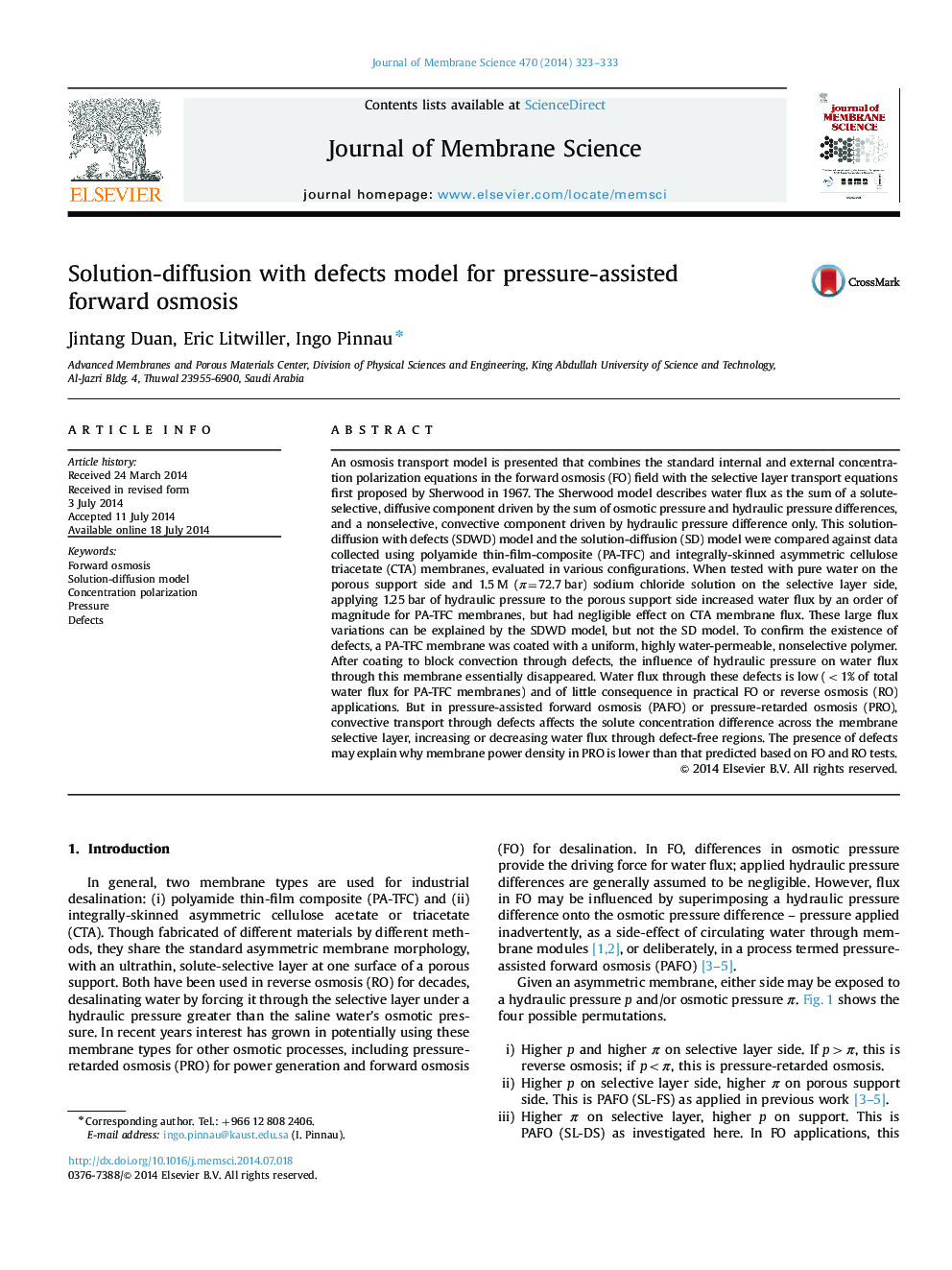| Article ID | Journal | Published Year | Pages | File Type |
|---|---|---|---|---|
| 633333 | Journal of Membrane Science | 2014 | 11 Pages |
Abstract
An osmosis transport model is presented that combines the standard internal and external concentration polarization equations in the forward osmosis (FO) field with the selective layer transport equations first proposed by Sherwood in 1967. The Sherwood model describes water flux as the sum of a solute-selective, diffusive component driven by the sum of osmotic pressure and hydraulic pressure differences, and a nonselective, convective component driven by hydraulic pressure difference only. This solution-diffusion with defects (SDWD) model and the solution-diffusion (SD) model were compared against data collected using polyamide thin-film-composite (PA-TFC) and integrally-skinned asymmetric cellulose triacetate (CTA) membranes, evaluated in various configurations. When tested with pure water on the porous support side and 1.5Â M (Ï=72.7Â bar) sodium chloride solution on the selective layer side, applying 1.25Â bar of hydraulic pressure to the porous support side increased water flux by an order of magnitude for PA-TFC membranes, but had negligible effect on CTA membrane flux. These large flux variations can be explained by the SDWD model, but not the SD model. To confirm the existence of defects, a PA-TFC membrane was coated with a uniform, highly water-permeable, nonselective polymer. After coating to block convection through defects, the influence of hydraulic pressure on water flux through this membrane essentially disappeared. Water flux through these defects is low (<1% of total water flux for PA-TFC membranes) and of little consequence in practical FO or reverse osmosis (RO) applications. But in pressure-assisted forward osmosis (PAFO) or pressure-retarded osmosis (PRO), convective transport through defects affects the solute concentration difference across the membrane selective layer, increasing or decreasing water flux through defect-free regions. The presence of defects may explain why membrane power density in PRO is lower than that predicted based on FO and RO tests.
Related Topics
Physical Sciences and Engineering
Chemical Engineering
Filtration and Separation
Authors
Jintang Duan, Eric Litwiller, Ingo Pinnau,
